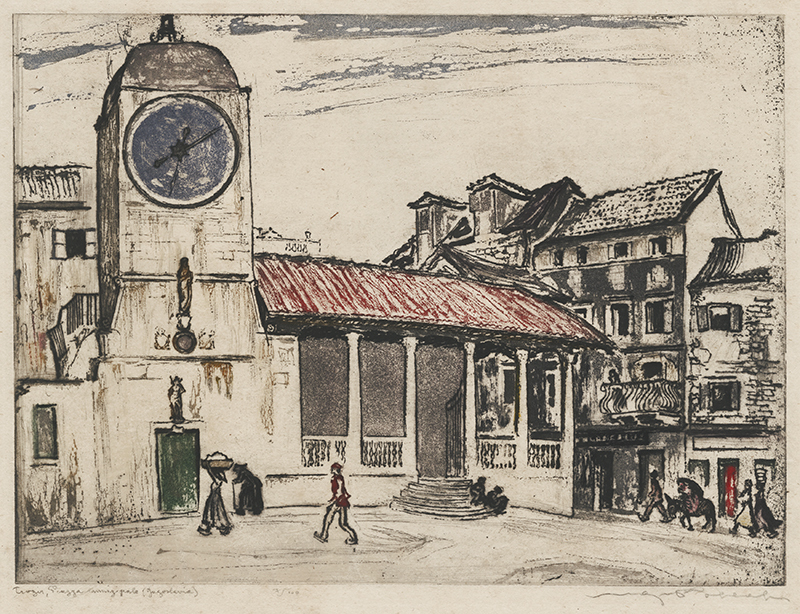
19th, 20th & 21st Century Fine Prints
707-546-7352 · fax 707-546-7924 · web: www.annexgalleries.com · email: artannex@aol.com
Trogir, Piazza (Yugoslavia) by Max Pollak

Trogir, Piazza (Yugoslavia)
Max Pollak
Trogir, Piazza (Yugoslavia)
Max Pollak
1886 - 1970 (biography)Pollak depicts the historic central square of Trogir, now a part of Croatia but -- at the time of this drawing-- still a part of Yugoslavia. He shows the Trogir loggia and its blue-faced clock tower overlooking the daily lives of the citizens, and the town's noted mix of baroque, Renaissance, and Romanesque architecture. The bulk of the town dates back to the 14th and 15th centuries, and the loggia was probably used as a courtroom in Renaissance times; it features reliefs that were made by Nikola Firentinac and Ivan Mestrovic. St. Lawrence Church, itself a 13th century landmark, is also situated on the central square.
Trogir’s history began around the third century BC with its founding by Greek colonists. It has a long history of invasions and destruction. After World War I, Trogir became part of the State of Slovenes, Croats and Serbs and subsequently the Kingdom of Yugoslavia. During World War II, Trogir was occupied by Italy but liberated in 1944 when it then belonged to the second Yugoslavia. Since 1991, Trogir has belonged to Croatia.


